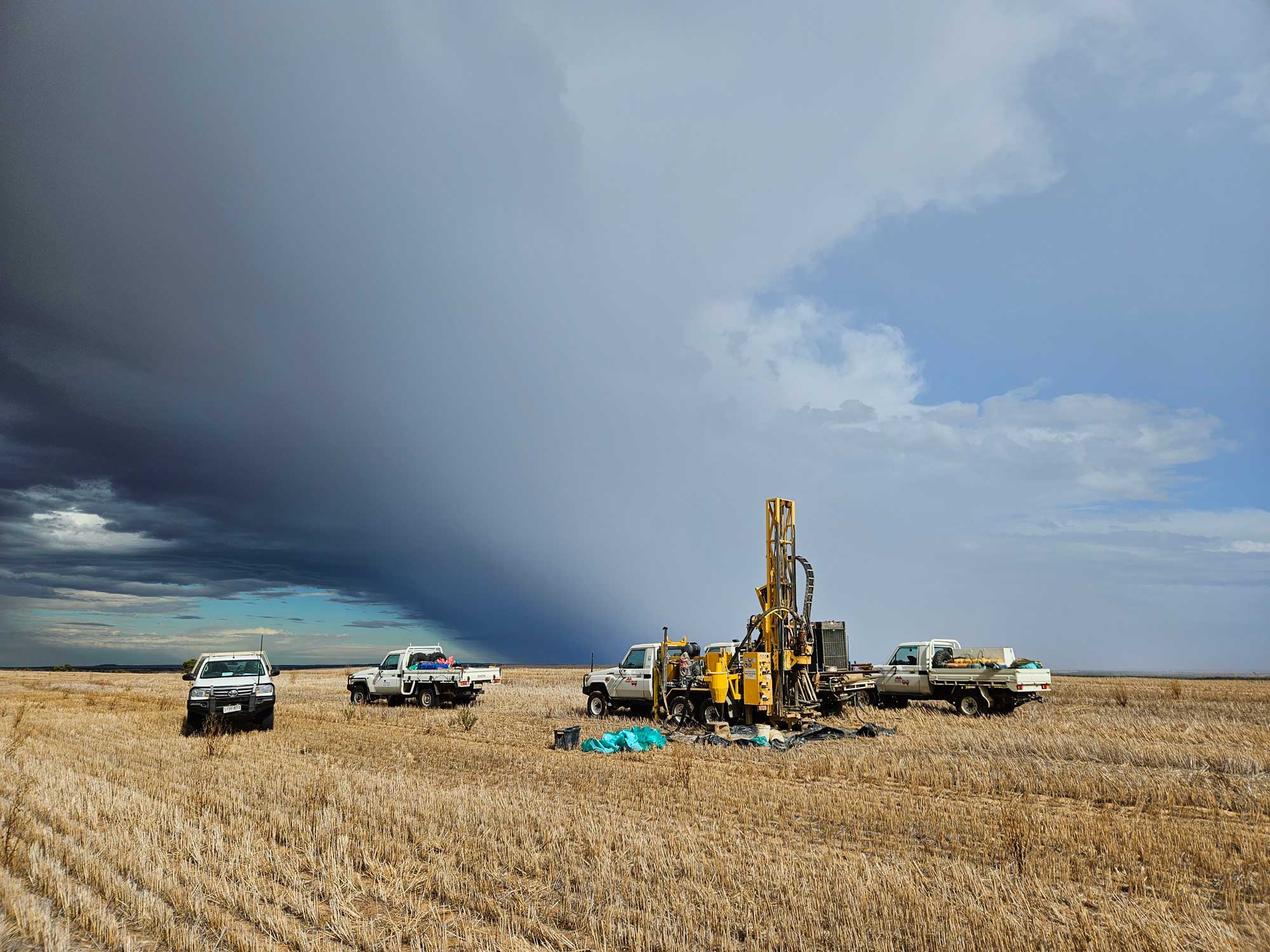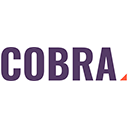Cobra Resources Acquires High-Grade Copper-Gold Project

Cobra Resources advances dual critical minerals strategy: ISR rare earth tech + high-grade copper discovery. Awaiting permits for field trials. $15M funding secured.
- Cobra Resources operates two key assets - the Boland heavy rare earth project targeting dysprosium and terbium through in-situ recovery (ISR) and a newly acquired Manna Hill copper project with significant porphyry potential.
- The Manna Hill project features historic high-grade intersections including 48 meters at 2.2% copper and 78g/t gold from 8 meters depth, with potential to extend existing 1.6km mineralization by over five times.
- The company has demonstrated exceptional rare earth recoveries at benign pH levels equivalent to black coffee (pH 4-5), with 63% total rare earth oxide in carbonate, positioning for bottom-quartile production costs.
- Currently awaiting regulatory approval for field studies to demonstrate ISR feasibility at scale, with existing wellfield infrastructure already installed and baseline environmental data completed.
- Recently divested gold assets for up to AUD $15 million, providing non-dilutive funding alongside Barton Gold shareholdings, supporting exploration programs across both projects.
Cobra Resources PLC (LSE:COBR), a South Australian-focused explorer and developer, is positioning itself as a diversified critical minerals company through its dual focus on heavy rare earth elements and copper exploration. Under the leadership of Managing Director and CEO Rupert Verco , the company is advancing two distinct but complementary assets that target some of the most strategically important minerals in the global energy transition.
Strategic Copper Acquisition Adds Near-Term Value Catalyst
In a significant strategic move, Cobra has secured an option over the Manna Hill copper project, a porphyry-style system that adds immediate exploration upside to the company's portfolio. The acquisition, structured as a related party transaction with director David Clarke, provides access to a historically productive copper-gold system with substantial expansion potential.
The Manna Hill project's appeal lies in its exceptional historic intersections and shallow, economic mineralization.
"The last hole that was drilled at Blue Rose, one of the key porphyry scan targets, was 48 meters at 2.2% copper and 78g/t gold from 8 meters. Really economic, really shallow."
Cobra's technical team has reinterpreted geophysical data across the project, identifying potential to extend the existing 1.6 kilometers of known mineralization by over five times. The geological model centers on a demagnetized "bullseye" anomaly that the company believes represents a porphyry intrusion feeding skarn mineralization - a geological setting analogous to Australia's most profitable mine, Cadia.
Porphyry Potential & Development Strategy
The Manna project encompasses multiple targets, including the Blue Rose porphyry-skarn system and the Netley Hill molybdenum-copper target. At Netley Hill, historic drilling intersected 350 meters at 0.1% copper and 0.015% molybdenum from surface, associated with a 3 billion ton chargeability IP anomaly that Verco describes as "very much like a Cobre Panama style target."
However, Cobra's near-term focus remains on the Blue Rose skarn mineralization, where it can achieve early wins while building understanding of the broader porphyry system. The strategy reflects careful capital allocation principles for a junior explorer tackling what could eventually become a large-scale porphyry development.
"Our strategy is to focus on the skarn. Let's build up that geochemical footprint so we know where we are in the porphyry system."
The company aims to work toward "a million tons of contained copper in resources within the skarn, where the big upside in the porphyry can be tested."
The Boland Heavy Rare Earth Project
Cobra's flagship Boland project represents what the company believes could become a bottom-quartile cost source of dysprosium and terbium, two of the most valuable heavy rare earth elements critical for permanent magnets in wind turbines and electric vehicles. The project spans 3,500 square kilometers of prospective land holdings in South Australia.
"We are planning on defining a bottom quartile cost source of dysprosium and terbium. We plan on doing that through a mining process called in-situ recovery. We have fantastic metallurgy. We're getting high recoveries at a pH of five which is the equivalent of a black coffee."
The company has identified what it describes as a new form of ionic rare earth mineralization, demonstrating exceptional metallurgical characteristics that differentiate it from traditional rare earth deposits. At bench scale, Cobra has already produced mixed rare earth carbonate (MREC) through ISR processes at ANSTO Laboratories, achieving remarkably high recoveries with minimal acid consumption.
The technical breakthrough lies in the ore's unique permeability characteristics, which enable the ISR process - a mining method more commonly associated with uranium extraction. This approach potentially offers significant environmental and economic advantages over conventional rare earth mining methods, which typically require extensive open-pit operations and complex processing facilities.
Awaiting Critical Permitting for Field Validation
Cobra currently finds itself at a crucial juncture, waiting for regulatory approval to conduct field studies that will demonstrate the ISR process at scale. The company has already installed wellfield infrastructure and completed baseline environmental and hydrological studies, positioning it to move quickly once permits are secured.
"The permitting that we're waiting for is going to enable us to do in-field in-situ recovery studies in our installed well field. The one benefit we have, we have all the baseline environmental and hydrology data achieved, and we're just waiting on the tick of approval from our regulatory government body to get out there and get that work done."
The field validation phase will be critical in demonstrating mining rates achievable in practice and proving scalability of the process. Cobra has strategically positioned itself with infrastructure that represents "the infrastructure of a mine," including peripheral monitoring bores and wellfield installations that could support future pilot studies.
Metallurgical Innovation
Beyond proving the basic ISR concept, Cobra is pursuing advanced metallurgical processes that could significantly enhance project economics. The company is currently assessing oxidation processes to remove cerium and lanthanum - lower-value light rare earth elements - early in the production process, potentially enabling production of higher-value heavy rare earth concentrates.
"What we're doing now is we're assessing how we can maximize our value. One of those processes is reducing cerium and lanthanum, maximizing the dysprosium and terbium in our carbonate."
This approach could qualify Cobra for Australia's critical minerals production tax credit while commanding higher payability rates from potential offtakers. The company's initial results show promise, with first-pass impurities remaining low and an exceptionally high-grade MREC containing 63% total rare earth oxides in carbonate.
Interview with Rupert Verco, CEO & MD of Cobra Resources PLC
Financial Positioning & Capital Allocation
Cobra's recent divestment of gold assets for up to AUD $15 million, combined with holdings in Barton Gold, provides the company with non-dilutive funding to advance both projects simultaneously. The 12-month option structure for Manna requires AUD $300,000 in drilling expenditure, allowing Cobra to demonstrate value before seeking shareholder approval for the full acquisition.
The deal structure heavily favors discovery success, with Cobra ultimately securing 74% ownership of a special purpose vehicle holding the Manna assets upon meeting certain milestones. A put-and-call mechanism after eight years provides a clear path to 100% ownership based on independent valuations.
Investment Appeal
Cobra's positioning as a critical minerals company targeting both heavy rare earths and copper reflects growing institutional interest in supply security for energy transition metals. The company's technical approach addresses key investor concerns around project development risk and capital requirements through its ISR methodology for rare earths and focus on near-surface, economic copper-gold mineralization.
"When we speak to institutions, they're very interested in our rare earth story, but they're probably a little bit hesitant and want to see us go further down the development pathway before committing. When you sell a scalable, significant copper story with credible results and a pathway to a valuable resource, there aren't many of them in Australia at the moment."
The dual-asset strategy provides multiple pathways to value creation while maintaining focus on critical minerals essential to the global energy transition. Both dysprosium and terbium command premium pricing due to supply concentration in China, while copper remains fundamental to electrification infrastructure globally.
The Investment Thesis for Cobra Resources
- Unique ISR Technology: Proprietary in-situ recovery process for rare earths operating at benign pH levels (equivalent to black coffee) offers potential bottom-quartile production costs and minimal environmental impact
- Strategic Heavy Rare Earth Focus: Targeting dysprosium and terbium, representing >90% of global heavy rare earth market currently dominated by Chinese ionic clays, addressing critical supply security concerns
- Proven High-Grade Copper Discovery: Manna Hill project offers immediate value catalyst with historic intersections of 48m at 2.2% copper and 78g/t gold from 8m depth, plus significant expansion potential across 1.6km+ strike length
- Infrastructure-Ready Development: Existing wellfield infrastructure, baseline environmental data, and regulatory framework in place for rare earth field trials, reducing development timeline and capital requirements
- Experienced Management with Disciplined Capital Allocation: Track record of tight capital raises, strategic asset divestment for AUD $15M non-dilutive funding, and structured option deals that reward discovery success
- Dual Exposure to Critical Minerals Supercycle: Balanced portfolio targeting both energy transition metals (rare earths for permanent magnets) and electrification infrastructure (copper) in geopolitically stable jurisdiction
- Multiple Value Inflection Points: Near-term catalysts include ISR field study approval, Manna drilling results, and rare earth metallurgical optimization, providing regular newsflow and re-rating opportunities
The global energy transition has created unprecedented demand for critical minerals, particularly those concentrated in geopolitically sensitive regions. China's dominance of heavy rare earth supply - representing 90% of the global market through ionic clay deposits - has prompted Western governments and corporations to seek supply diversification. Recent investments by the US Department of Defense and Apple in MP Materials underscore this strategic imperative. Simultaneously, copper demand for electrification infrastructure continues to outpace discovery rates, creating sustained supply deficits.
Cobra Resources emerges at the intersection of these supply security concerns, offering potential domestic production of both heavy rare earths and copper in Australia's stable regulatory environment. The company's ISR technology for rare earths addresses environmental and cost concerns that have historically limited Western production, while its copper assets target near-surface, economic mineralization in a jurisdiction with established mining infrastructure. As Verco notes,
"We're in the copper state of Australia. We have the right fertile geology here and there's been a lot of government-backed magnetometric work which shows the right crustal big system type structures to host significant deposits."
Analyst's Notes




Subscribe to Our Channel
Stay Informed


























